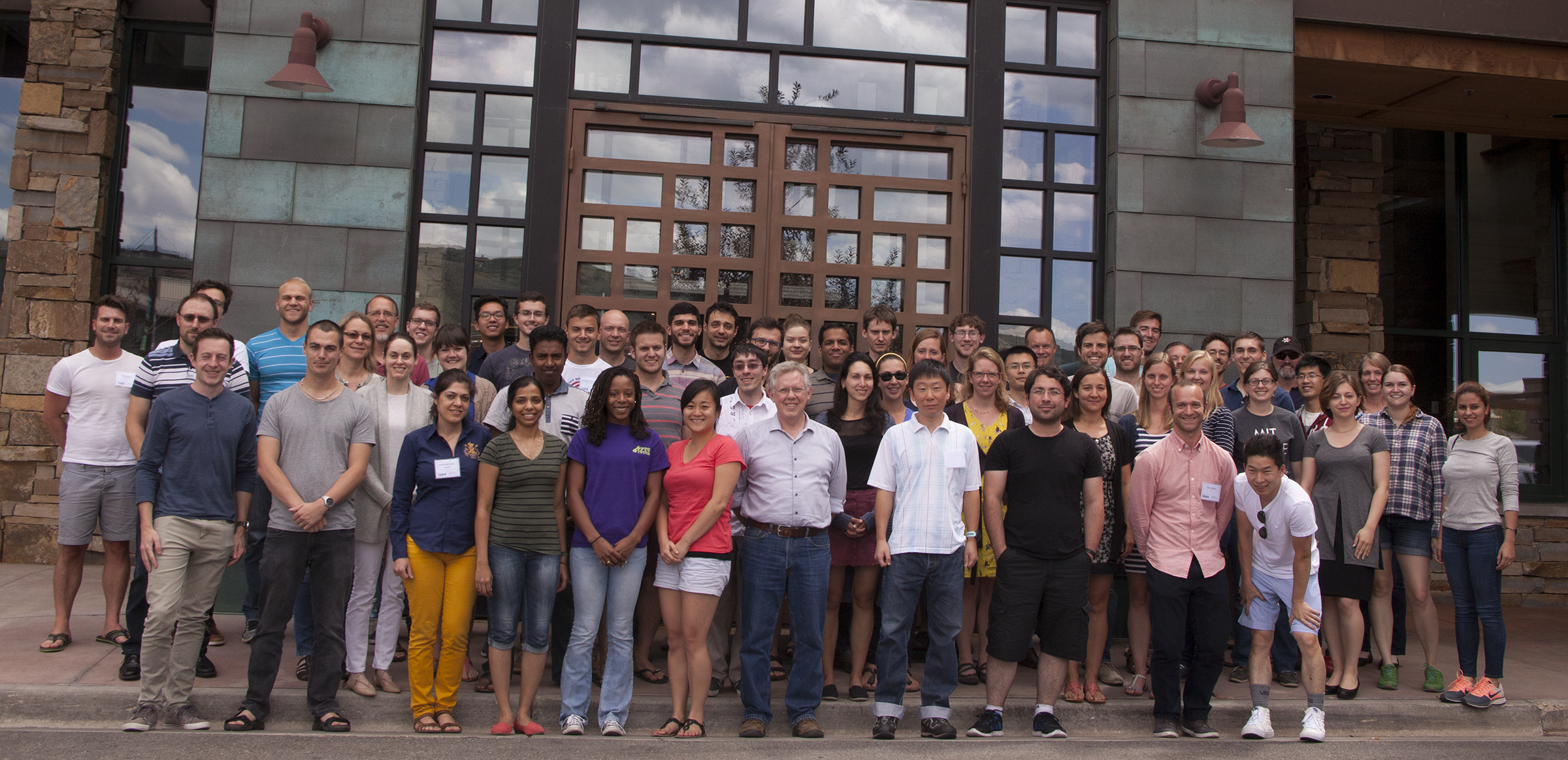 The Image-Based Biomedical Modeling (IBBM) summer course was held for the third time in 2016, from July 11-21, 2016 in Newpark Resort, Park City (Utah). The two-week course format included the following activities:
The Image-Based Biomedical Modeling (IBBM) summer course was held for the third time in 2016, from July 11-21, 2016 in Newpark Resort, Park City (Utah). The two-week course format included the following activities:- Didactic lecture sessions given by the three PIs (Rob MacLeod, Ross Whitaker and Jeff Weiss) as well as three invited instructors (Miriah Meyer, Steve Maas and Gerard Ateshian) experts in their fields
- Laboratory exercises lead by a group of teaching assistants and developers,
- Discussion session time for student-instructor interaction,
- Visit to the experimental and computational laboratory facilities at the University of Utah, College of Engineering to give the participants an overview of the general academic background and research projects performed at the university,
- Four Keynotes Lectures from leaders in the field,
- Mentoring lectures on grant writing, responsible conduct of research, and simulation study design.
IBBM is a dedicated two-week course in the area of image-based modeling and simulation applied to bioelectricity and biomechanics, providing participants with training in the numerical methods, image analysis, visualization, and computational tools necessary to carry out end-to-end, image-based, subject-specific simulations in either bioelectricity or orthopedic biomechanics. The course focuses on using freely available, open-source software developed under the research of the CIBC (P41 GM103545) and FEBio suite (RO1 GM083925). Students use this software to learn and apply the complete dataflow pipeline to particular sets of data with specific goals.
The IBBM summer course hosted 45 participants this year: 35 graduate students, 3 MD-PhD students, 1 PhD student in industry, 3 post-doctoral fellows, and 3 faculty (one from the US, two from Europe). Participants came from 35 different institutions, and including universities in Poland, Belgium, Denmark, England, The Netherlands, Norway, and Canada, which broadened the exposure of the biomedical image-based modeling course to a wider audience. The format included lectures/labs on topics of common interest (e.g., image processing, visualization, geometry processing, and numerical methods) presented to the entire group and then in parallel tracks in Bioelectricity (11 participants) and Biomechanics (34 participants).

One of the highlights was the visit to the University of Utah for a day: the participants were taken on a tour of the SCI Institute in the Warnock Engineering Building (WEB) and the Sorenson Molecular Biotechnology Building (SMBB). This trip included several of the regularly programmed lectures followed by brief demonstrations and lectures from SCI Institute faculty and graduate students, exposing participants to a wider range of applications and research areas not covered in the course lectures.
In addition to conventional classroom training, this course covered three important academic mentoring concepts: Simulation Study Design, Grant Strategy, and Responsible Conduct of Research. Each of these lectures presented participants with tools for how to design statistically relevant studies, write and submit grants, and perform ethical and responsible research. The format of the Grant Strategy session was a panel discussion and included guest lecturers. The students frequently guided the discussion into broad domains of career decisions and management.
Finally, this year's Keynote Speakers were outstanding researchers in the biomedical fields who made an impression on the students as well as increasing their networks.
Igor Efimov, PhD
Department Chair, Alisann and Terry Collins Professor of Biomedical Engineering
The George Washington University
Victor Barocas, PhD
Professor, Department of Biomedical Engineering
University of Minnesota
Elliot McVeigh, PhD
Professor, Department of Bioengineering
UC San Diego
Gerard A. Ateshian
Andrew Walz Professor and Chair of Mechanical Engineering & Professor of Biomedical Engineering
Director, Musculoskeletal Biomechanics Laboratory
